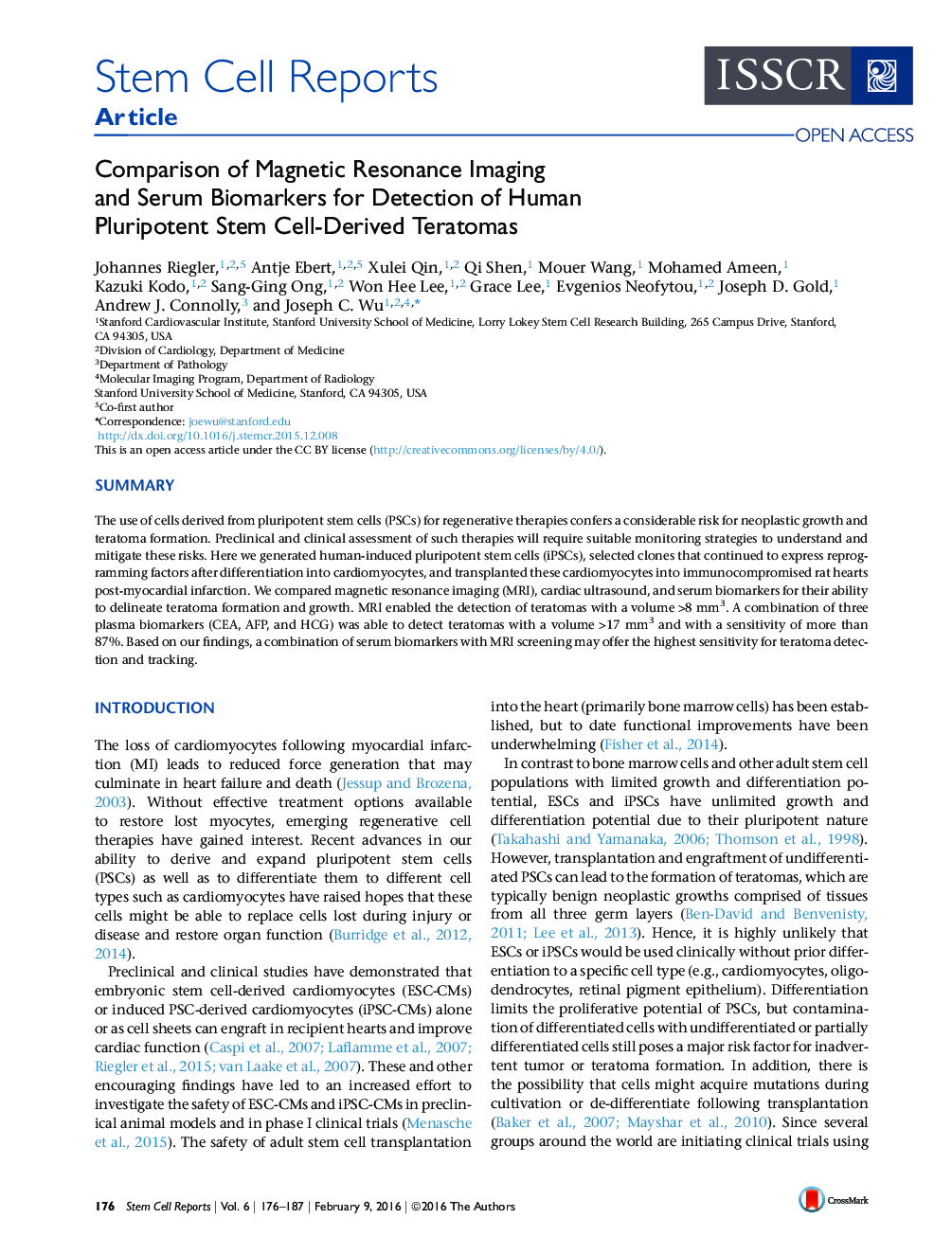| کد مقاله | کد نشریه | سال انتشار | مقاله انگلیسی | نسخه تمام متن |
|---|---|---|---|---|
| 2093274 | 1081950 | 2016 | 12 صفحه PDF | دانلود رایگان |
• A combination of three serum biomarkers can detect teratomas >17 mm3
• MRI can detect teratomas >8 mm3
• Immature teratomas not detectable by serum biomarkers can be detected with MRI
• Combining MRI and serum biomarkers enables sensitive detection of neoplastic growth
SummaryThe use of cells derived from pluripotent stem cells (PSCs) for regenerative therapies confers a considerable risk for neoplastic growth and teratoma formation. Preclinical and clinical assessment of such therapies will require suitable monitoring strategies to understand and mitigate these risks. Here we generated human-induced pluripotent stem cells (iPSCs), selected clones that continued to express reprogramming factors after differentiation into cardiomyocytes, and transplanted these cardiomyocytes into immunocompromised rat hearts post-myocardial infarction. We compared magnetic resonance imaging (MRI), cardiac ultrasound, and serum biomarkers for their ability to delineate teratoma formation and growth. MRI enabled the detection of teratomas with a volume >8 mm3. A combination of three plasma biomarkers (CEA, AFP, and HCG) was able to detect teratomas with a volume >17 mm3 and with a sensitivity of more than 87%. Based on our findings, a combination of serum biomarkers with MRI screening may offer the highest sensitivity for teratoma detection and tracking.
Journal: - Volume 6, Issue 2, 9 February 2016, Pages 176–187
